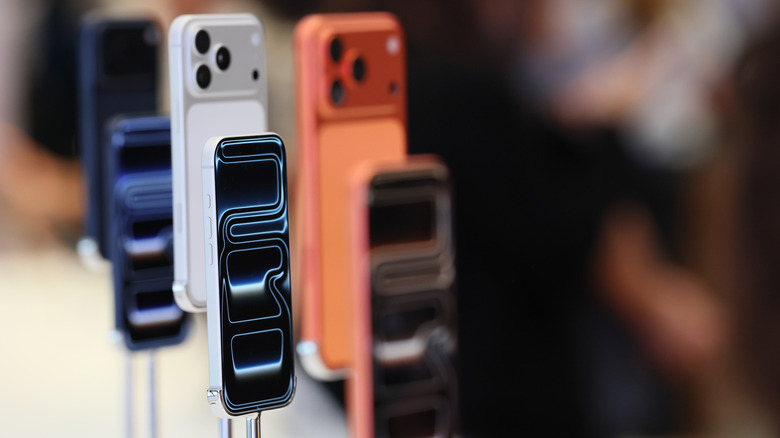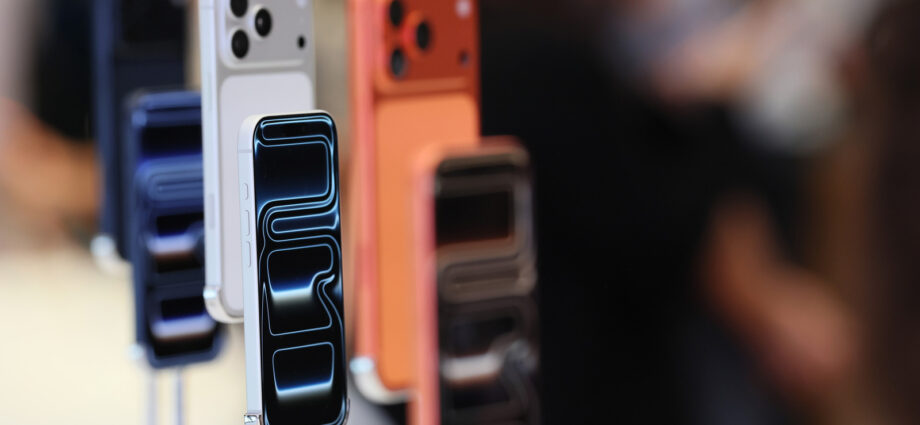
Michael M. Santiago/Getty Images
The iPhone 17 Pro and iPhone 17 Pro Max are Apple’s first iPhones to feature vapor chambers, a component Android smartphone vendors embraced long before the iPhone maker to help cool down increasingly powerful chips. Combined with the unibody aluminum chassis that extends towards the back, covering the camera plateau and curving along the side and bottom edges, the vapor chamber should move heat from the powerful A19 Pro chip more efficiently than the cooling solutions Apple used in previous iPhone generations. iPhone 17 reviews have shown that the cooling system works, preventing overheating, and allowing the iPhone 17 Pro models to maintain peak performance for longer than iPhone models that lack vapor chambers and an aluminum chassis.
But one Reddit user wanted to see whether they could improve the iPhone 17 Pro Max cooling beyond what the device offers out of the box. T-K-Tronix placed several M.2 SSD heatsinks on the back of the iPhone, as seen in one of the following images. The resulting monstrosity managed to perform even better in resource-intensive benchmarks, without dropping performance as fast as a regular iPhone 17 Pro Max. The phone maintained over 90% stability over 20 runs of the 3D Mark Stress Test:
The iPhone 17 Pro Max contraption the Redditor assembled showed that the device can be an even more reliable machine for resource-intensive tasks, as long as the cooling is adequate.
More than a gimmick
Putting heatsinks on the back of the iPhone 17 Pro and iPhone 17 Pro Max to prevent throttling is not a practical solution. Reviews have shown that Apple’s vapor chamber does keep the new Pro models cooler than the iPhone 17, iPhone Air, and the previous-generation models. Whether you’re using the iPhone 17 Pro models professionally or you’re a regular user, heat dissipation should not be a worry. The iPhone 17 Pros should not overheat, and they should support higher performance for a longer period than iPhones that lack vapor chambers.
That said, T-K-Tronix’s findings might be relevant for a different kind of product that would run on high-end A-series iPhone chips. Rumors say Apple is developing a low-cost MacBook Air that might start at $599. Instead of the usual M-series chips you’d expect inside a MacBook Air, Apple is rumored to use the A18 Pro chip that powers the iPhone 16 Pro models.
The M-series MacBook Airs offer the same performance as MacBook Pro models released the same year. The difference is that Apple uses active cooling on the MacBook Pro, so they can offer sustained peak performance for longer than the Air. While the $599 MacBook Air isn’t likely to feature active cooling, certainly not the kind the Redditor tested, the MacBook Air does have more internal space than the iPhone. Apple could always explore ways to improve heat management in a MacBook Air powered by an A-series chip to improve performance stability. At the very least, T-K-Tronix’s contraption above shows that iPhone chips can work on intensive tasks at near peak speeds for longer periods if they have proper cooling.

